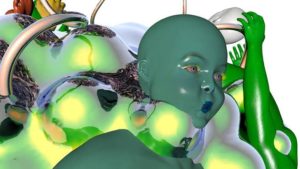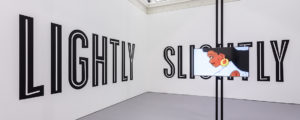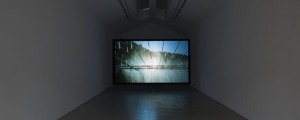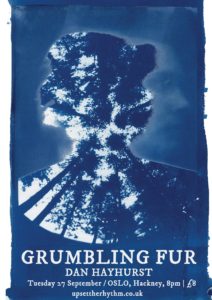To many, the human body is a triumphant constant in a world of perpetual change. For Josiah McElheny, however, it is a language that tells of the constant ways cultural vogues have transformed. Currently exhibiting at White Cube Gallery the daring New Yorker’s show entitled Interactions of The Abstract Body, explores the relationship between fashion and Modernism, while investigating the ways they have influenced each other and been interpreted by avant-garde movements.

Deceptively simple in appearance, the upper level of the show consists of seven sculptures housed within vitrines made of glass, steel and cedar. Each sculpture is made from carved and cut glass creating curvaceous, clothed body shapes that are based on interpretations of the human form by designers and artists from the past century. McElheny completely removes bodily flesh and blood from these glass bodices, resulting in nothing but the outline in the shape of clothing. Fashion and Modernist art combine to create a physical interpretation of the way we as society have defined our environments through cultural forces.
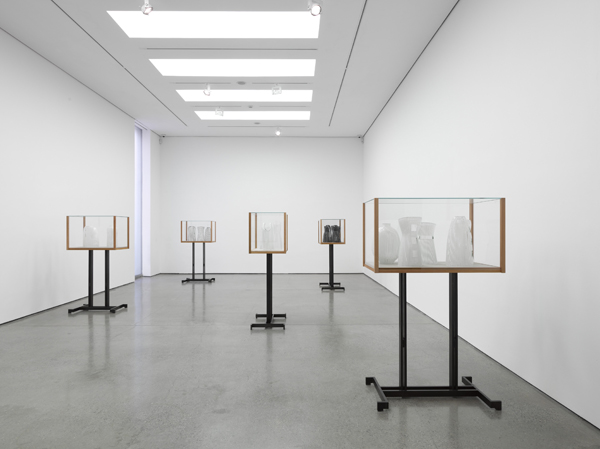
Academic in tone, the show is also enticing as a viewing experience – however, this is only true under one crucial condition. The title of each work is paramount to the viewer’s comprehension of the show and a significant part of the substance of each work stems from the name. Without knowing the title of each work, the objects are cold, lifeless and appear simply as glass shapes.

Upon knowing the titles however, the works come to life. For example, ‘The Constructivist Body (after Delaunay)’ consists of a series of glass bodies representing a Constructivist interpretation of the human form. Architectural in design and mixing slender body shapes with jarring incisions, one of these objects appears as a dress with step-like incisions cut into its back. The result is a grating structure that, rather than linking to abstract ideas, is kissed with a typically Constructivist tangibility.
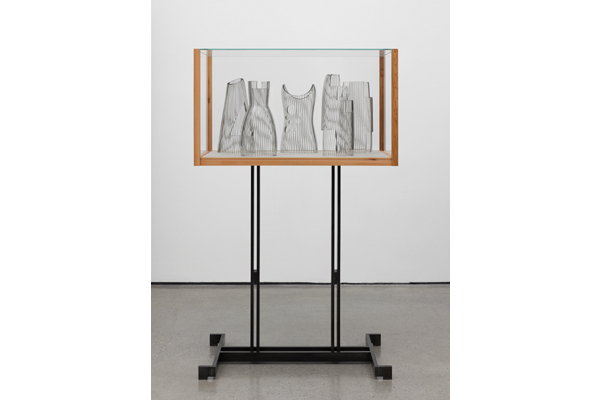
The upper part of the show is evocative and historically insightful but the lower level of the gallery is where the true magic of the show lies. Walking into the spacey hall, the viewer is hit with a reflective disunity. Eight geometric mirrored sculptures fill the room, some static whilst others move, as performers from Trinity Laban Conservatoire of Music and Dance wear the shapes and walk round in precisely choreographed patterns. The whitewashed walls and numerous mirrors exaggerate the sense of space as viewers and substitute performers intermingle to create a busy atmosphere.
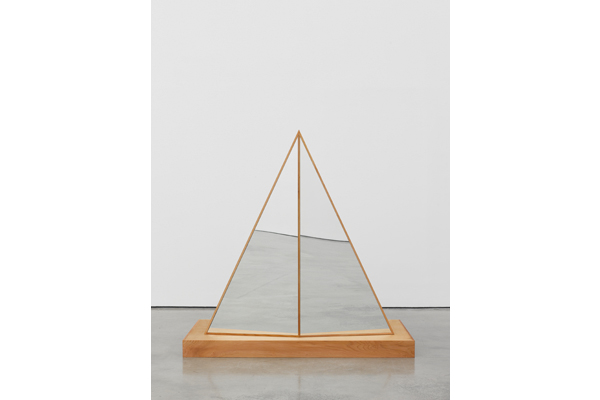
Reflecting McElheny’s interest in the comic side of Modernism, there is a notably humorous element to the exhibition. The shapes move around like sandwich boards, with only the performers legs in view as the objects morph into kinetic sculptures. Always at the forefront of the cutting-edge arts scene, White Cube Gallery uphold its reputation with progressive elegance, while McElheny’s investigation into the way fashion and Modernism have intersected and influenced one another is at once intellectual and pleasurable.
Josiah McElheny’s Interactions of the Abstract Body is on at London’s The White Cube Gallery and runs November 16 to January 12, 2013.

